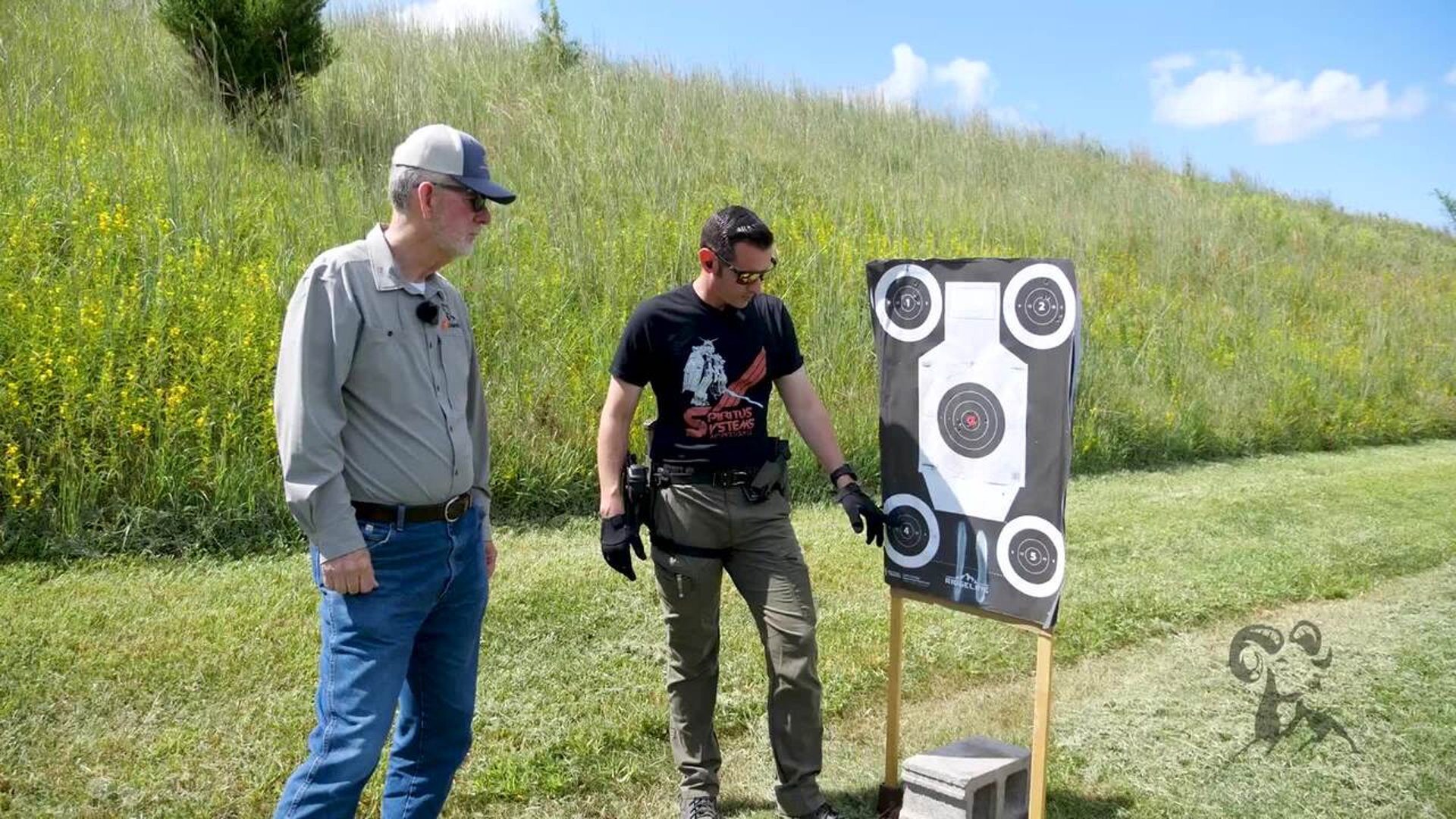SmythBusters: Mounting Optics on Handguards
Intro to the Optics on Handguard Myth
Steve and Caleb from Brownells return with another episode of SmithBusters to tackle a common AR-15 myth. Many shooters mount optics on their handguards or even bridge the optic between the receiver and the handguard. The question is simple: does this affect accuracy and zero retention, or is it safe to do?
Why People Mount Optics on Handguards
Some shooters push optics forward onto the handguard to gain more rail space, improve eye relief, or achieve a certain look. Red dots, LPVOs, and other scopes are often seen bridging the gap between receiver and handguard. But is this practice reliable in real-world conditions? Steve and Caleb set out to prove the results on the range.
AR-15 Setup and Baseline Group on Receiver
The test rifle is a basic AR-15 build using a free-float handguard. Before moving any optics, Caleb fires a baseline group with the red dot mounted correctly on the upper receiver. This provides a control group for comparison.
Moving Red Dot Onto Handguard
Next, the red dot is moved forward onto the handguard. At first, Caleb and Steve expect little change because the handguard is solid and free-floating. However, mounting on the handguard introduces potential flex and vibration that may affect consistency.
Shooting Groups from Handguard Mount
When the rifle is fired with the red dot mounted on the handguard, the point of impact shifts, and the group opens up. While still on paper, the accuracy noticeably decreases. Handguard flex, bipod pressure, and vibrations all contribute to the wider groups.
Group Size Changes and Handguard Flex
Caleb observes that the second group nearly doubled in size compared to the receiver-mounted optic. Even though the handguard is well-built, it simply does not provide the same stability as the receiver for mounting optics.
Drop Test and Zero Shift Results
To simulate real-world use, the rifle is dropped and banged around with the optic still on the handguard. After another group is fired, the zero shifts significantly. At close range, this might be manageable, but at 100 yards the shots would completely miss the intended target.
Receiver vs Handguard Comparison
By comparing the groups, it becomes clear that optics mounted on the receiver produce tighter, more consistent results. Handguard mounting consistently causes group expansion and zero shifts, showing why this is a poor practice for anyone who values accuracy.
Testing an LPVO Bridging Receiver and Handguard
To take the test further, Caleb mounts an LPVO optic so that it bridges across the receiver and the handguard. Immediately, the results are poor. Groups spread out over an inch at just 36 yards, showing that bridging is even more unstable than mounting entirely on the handguard.
Accuracy Results and Group Spread
The LPVO test produces a group that looks like two separate impacts, confirming that vibration and flex between the receiver and handguard cause shifting. The group is unacceptable for a precision optic and highlights why bridging optics is never recommended.
Drop Test with LPVO Mounting
After another drop test, the LPVO-mounted setup shifts even further. While the group size shrinks slightly, the point of impact moves over two inches. At 100 yards, this shift would mean shots completely off target.
Zero Shift After Impact
The testing proves that once the rifle is bumped, dropped, or stressed, any optic mounted on the handguard or bridging the gap cannot hold zero. Even with a strong mount, the flex and movement of the handguard compromise accuracy.
Practical Implications for Accuracy
For defensive rifles, truck guns, or hunting rifles, an optic that loses zero after impact could have serious consequences. Even in casual shooting, the inaccuracy is frustrating and unnecessary. The solution is simple: always mount optics on the receiver.
Internet Myths and Common Mistakes
Steve and Caleb note that many internet forums and social media posts still recommend bridging optics, but their live-fire test clearly shows the risks. Both red dots and LPVOs suffer the same issues when mounted improperly.
Final Verdict on Optics Mounting
The myth that you can mount optics on handguards or bridge the receiver and handguard is officially busted. For accuracy, repeatability, and zero retention, optics should always be mounted on the receiver. Handguards are for accessories like lights, grips, and lasers, not primary optics.








